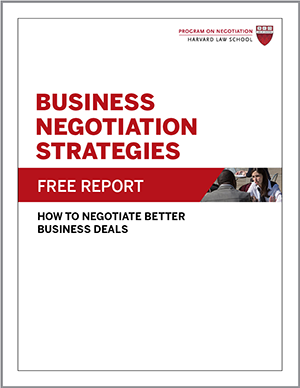
Adapted from “Master the Art and Science of Haggling,” in the August 2009 issue of Negotiation.
One common misconception of haggling is that it must focus only on a single issue: price.
Although price might be the most important issue at stake, you could sweeten the deal for both sides by discussing other issues, such as delivery, financing, and the possibility of repeat business.
You can open up such opportunities through direct questioning or by making what Deepak Malhotra and Max Bazerman call contingent concessions—concessions that you link to specific actions by the other party.
In the TV negotiation, the salesperson might reciprocate your last offer by grudgingly agreeing to come down to $950, a price within the bargaining zone.
Or you might agree to pay $975 in exchange for having the store dispose of your old TV. But if the salesperson (or his manager) is still unwilling to make a deal that you prefer to your online option, you should feel comfortable walking away with the knowledge that you did your best.
Sometimes in a negotiation, you can get a better all-around deal by changing the item under discussion.
Returning to the wine negotiation at a restaurant, suppose your group has little interest in fine wines, but several of you are tempted by a pricey entrée.
“We’ll pass on the reserve list,” you might say, “but if three of us order the truffles, can you give us a group discount?”
It’s a negotiating gambit that chef Burke would almost certainly admire.
Related Article: Dealmaking – Six Strategies for Creating Value or Claiming Value Through Haggling





